14 Sai no Koi: The Manga Manual to Puberty
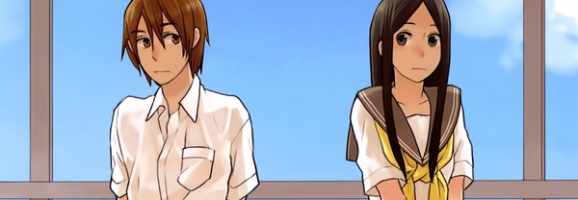
14 Sai no Koi, known to fans as 14 Love, centers around two fourteen year old friends Tanaka Kanata and Yoshikawa Kazuki as they progress through their adolescent lives. The manga initially is a cute, slice of life manga about two middle school students who develop feelings for each other, but it quickly becomes much more than that. Through its commentary and self-aware characters, the manga dissects the physical and emotionally effects of puberty on the story’s innocent cast, documenting the sometimes exciting and sometimes scary aspects of growing up. Through notebook pages seen at the beginning of some chapters, the characters compile a list of the steps involved in puberty that affect them. A part of the notebook reads: “In the textbooks written by adults, you won’t find the questions a 14 year-old has.” 14 Love takes these questions and show how they affect its characters, by analyzing the various parts of puberty and showing how a variety of characters overcome their new problems and situations.
1. Start of Self-Consciousness
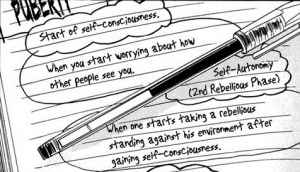
14 Love breaks down the development of self-consciousness into two steps, the first being “when you start worrying about how other people see you.” Children are usually unaware of the thoughts of the other people. They simply wish to satisfy themselves and the immediate group around them, not thinking about the thoughts of others. However, during adolescence when they are forced to interact with the collective whole of society, insecurities begin to surface. The character who develops the most insecurities is Kazuki, who is somewhat shy and timid under his mature façade. When he is having difficulty in his math class before finals, he does not ask his friends for help because he is embarrassed about his situation. He does not want anyone, especially his girlfriend Kanata, to think he is dumb and beseeches someone to help him in secret. The anxiety that comes from thinking of others’ judgments begins to sprout during the formative adolescent years of young people’s lives.

Another instance of Kazuki’s self-consciousness is derived from the physical effects of puberty. He is very uneasy and critical about his outward appearance. While practicing for the choir competition, he is constantly worried about his Adam’s apple which has just begun to form. Multiple times he thinks, “Does everyone’s Adam’s apple move so much? Do other guys worry about their Adam’s apple?” He is self-conscious about his singing because he does not want everyone to stare at him. He also holds off wearing his winter uniform for a while, even though the weather starts to get cold. His old uniform is too small, since he grew out of it during the summer, and would rather freeze in class than have other’s mock him for his clothing. These insecurities are put to rest by Kanata, who is always there to reassure him and help him through his slumps. Still, these instances show how vulnerable adolescents are during this stage in their lives.
The second stage of the start of self-consciousness is the rebellious stage: “When one starts taking a rebellious standing against his environment after gaining self-consciousness.” 14 Love makes this point clear by expressing this trait in all of the major characters. Kishi Aoi, a quiet girl who does not involve herself much with the class, takes all her inner aggression and uses it to rebel on the home front. She is constantly angry at her older sister who continuously mocks her and always refuses to do what she asks at first. Although she ultimately enjoys her sister’s company, Aoi puts on a rebellious front to show that she is not a little girl anymore and does not need her sister to tell her what to do. In contrast, Nagai Tatsumi, another disassociated boy in class, takes his rebellious nature and lets it out at school. He yells at his disgusting teachers, proclaiming he does not need them telling him what to do and that he is fine on his own. Both these examples show that, in one way or another, young adults want some autonomy in their lives. They want to make their own choices; even if they make mistakes, at least they can say they acted on their own will. This desire spurs from the acknowledgement of their self-consciousness and ability to exist as a solitary unit.
Even mild-tempered Kanata and Kazuki, who usually function in their personal microcosm, rebel and fight their own status quo; they argue and break their tradition of meeting in the science room between classes for several days, feeling that they do not understand each other anymore and let their new self-consciousness put their relationship at risk. In this moment, they yearn for an individualism they do not think have but later make up, realizing that they can only take off their mature masks and be themselves when they are with each other. The somewhat rebellious nature all the characters have is a natural progression from gaining their self-consciousness; they become tempted to test the limits of their newfound individuality. It shows through the disobedient Aoi, the angry Nagai, and the innocent romance between Kanata and Kazuki; a desire to break free naturally occurs when finding oneself. The manga expresses this wonderfully by using the different situations of the characters to show that this step is universal.
2. Interest in the Other Gender

“Along the sexual maturity of the body, the interest in the other gender increases.” This aspect of puberty is the most prominent in the manga due to 14 Love’s shoujo, romantic nature. The relationship between Kazuki and Kanata highlights this beautifully, showing the subtle but relevant physical changes that happen during development that make other’s more mature. When hiding from their classmates in the science room, Kazuki pins Kanata up against the wall so no one will see them. Kanata is immediately embarrassed: “We used to have the same strength…but this is the first time you pushed against me and I couldn’t push back.” Kazuki also notices Kanata’s developing chest and slender shoulders for the first time: “When did she become like this?” For a while after that, the childhood friends are embarrassed in front of each other, not knowing what to do about this developing attraction. Kanata, to Kazuki’s dismay, notices his Adam’s apple and realizes that they are growing up. They eventually dispel the awkwardness between them and start to embrace their mutual attraction, sharing small kisses and touches in the corner of the science room. The budding of this adolescent love is sweet and convincingly portrayed by the author, who is able to naturally bring the characters to the same understanding. The two begin to understand each other together and their attraction leads to a fragile love that many experience in their youth.

Another instance of heterosexual attraction in 14 Love is Nagai’s forbidden desire for his music teacher Hinohara-sensei. The attraction begins as totally physical, but it soon starts to encompass many other aspects. Hinohara-sensei holds Nagai after class for special lessons because he has a talent she feels like it would be a waste not to harness. This feeling of acceptance and praise flatters Nagai, a student who purposely separates himself from others and has few friends. Hinohara-sensei also teases and, in a way, challenges Nagai mentally, allowing the attraction to advance to an intellectual level. This relationship is one of the only intimate and special things Nagai has in his life and he grows protective of it, threatening Kazuki when he discovers the relationship and running during the sports festival even though he is injured in order to get a kiss from Hinohara. Nagai interprets an attack on his secret relationship as an attack on his pride and he works hard to defend both of them. Although still fickle and immature, he puts so much effort into this at first playful attraction that even Hinohara begins to fall for him. Nagai’s budding relationship shows that someone cannot help who they are attracted to and how delicate and emotionally draining first-time relationships can be, especially during such a formative time in a person’s life.
Aoi’s development differs from the others entirely. One day, she trips in the hallway and falls in love with the large, strong hand that helps her up, realizing too late that the person she has fallen in love with is Kanata, another girl. At first, she is confused and angry with her feelings. “Why couldn’t you be a man?!” she thinks constantly when interacting with Kanata. She begins to avoid Kanata, hoping that her feelings will pass if she puts space between them. However, her interest in Kanata only grows and, as time passes, she comes to terms with her situation. She acknowledges the fact that she is attracted to Kanata and goes out of her way to ruin Kazuki’s chances with the hope of dating Kanata herself. In this sense, although she is not attracted to the other gender, Aoi experiences the emotional awkwardness and anxiety that comes with first love to the same degree as the other characters in the manga. Aoi is one of the strongest characters in the manga; she is able to overcome a stifling situation and accept herself, which is one of the biggest challenges during puberty.
3. Isolation and Independence
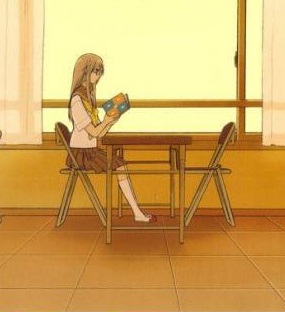
In many ways, this step in puberty is the most prominent in the manga, since every character craves for isolation and a strand of independence. However, to them, it is also the most frightening. As a comment in this section of the notebook, they write: “Don’t make it sound like an illness for 14 year-olds. There isn’t even any medicine to heal it.” Desiring independence is a side effect of all the other stages, searching for isolation to rid one’s self of the judgments of other and time alone in order to understand the new feelings their new bodies are giving them. Also, since all the characters go through this step as well, it can be implied that the need for isolation and independence are universal characteristics of puberty.
14 Love defines this aspect of puberty as follows: “when one starts taking a rebellious standing against his environment after gaining self-consciousness.” Nagai and Aoi are the most prominent example of youths searching for isolation, since they purposely separate themselves from the rest of the class. Nagai simply feels like school isn’t worth his time and aloofly goes through his daily life, wishing that he could decide what he wants to do with himself; this is a general example of a young person searching for independence and wanting to make their own choices. Aoi’s situation is slightly different. She isolates herself because she likes to write and, after realizing her feelings from Kanata, removes herself from most situations so that her secret won’t be discovered. Although it is eventually discovered by Kazuki, who then tries to involve her in class activities, she still tries to make an effort to be on her own and watch Kanata from afar. Both Nagai and Aoi publicly isolate themselves from their peers in order to avoid them and acknowledge themselves as separate entities outside of the class. They wish to be individuals rather than members of the group, although Kazuki and Kanata always try to include them, and use this as their way of declaring their independence.
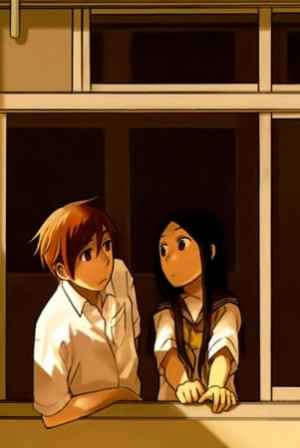
Kanata and Kazuki are popular members of the class with many friends, yet they still cannot shake off the desire for independence and strive for isolation. Their secret meetings in the science room is their form of isolation; whether it is between classes, after school, or even during class when they need someone to talk to, they will leave any situation to meet each other in the science room. These are the moments where they can truly be themselves without outside pressures and use this isolation to develop their own independence. To these two students, they only feel independent inside their microcosm so they yearn for isolation constantly for self-satisfaction. This allows them to deal with their problems, make their own decisions without outside judgement, and continue the development of their relationship. Although they are in no way, shape or form isolated from society, Kanata and Kazuki seek isolation on a personal level. Teens do not have to go to extremes like Nagai and Aoi; Kanata and Kazuki show that teenagers can all seek isolation and independence in different ways.
14 Love shows how puberty affects a variety of characters and how they ultimately all follow the same patterns. The manga, which at face value is a very entertaining, beautifully drawn manga, takes its story a step further by making it meaningful to its desired audience. The shoujo genre, targeted at middle and high school students, are teens who are going through the same changes and have the same insecurities as these characters. Like other coming of age manga such as Hourou Musuko, Nana, Kare Kano and Sakamichi no Apollon, 14 Love does an amazing job of naturally allowing the characters to progress in their lives, making the manga feel less like a guide and more like a story. Above all, Kazuki and Kanata’s innocent relationship beautifully shines above all the other themes which helps 14 Love be one of the most enjoyable learning experience for young adults. It greatly hilights the problems the Japanese youth may have in their middle school days. Other adolescents in other cultures may have slightly different problems, due to Japan’s conservative society, but this manga aims to teach to those everywhere and therefore uses universal themes to stress the importance of coming of age. With the manga incomplete, it will be great to see what else these characters go through in the beginning of their adolescent lives and how, through their medium, they can help their young readers figure out their own lives.
What do you think? Leave a comment.







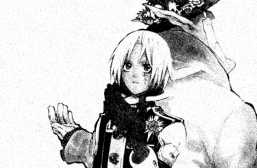

Great Article! I’m not usually into slice of life, but I wanna check this out because the premise seems very interesting. It sounds like a lot of detail was but into the authenticity of growing up, which is something everyone can relate to.
My favorite coming of age manga are:
-Houro Musuko
-Piano no Mori
-Most Adachi works
Well, I can’t tell you how long, I have been putting off this manga. The title of it always stuck in my head! I would sometimes just repeat it at random moments when I was daydreaming or thinking about something I’d just say ’14 sai no koi’, ’14 sai no koi’ and I never knew why, but I just really loved the title.
No whiny Girl of ‘tough’ Guy… learn Japanese manga artists.
It is the very first time I read a shoujo where the relationship between the Boy and the Girl is already established, so we do not have to go through all the drama of ‘I think I like you, do you like me too?’ stuff.
This is definitely one of the most adorable manga series that I’ve ever read.
It is not my “all time” favourite manga book. Nothing that special happened in it that I’ve seen in a 100 other manga’s.
Rarity amongst crappy coming of age manga’s.
Wow lovely piece. The sweetness of the characters love for each other and exploration thereof is really wonderful to witness.
I remember reading the first couple chapters then put it down as it didn’t really attract me that much. Perhaps I’ll give it a 2nd chance after reading this article.
I am almost twice their age but love it still.
This makes sense as topics of love tend to be relatable universally.
A really cute young-love story. Great study of the manga.
One of the best adorable shoujo manga I have read. The characters are not all mushy-loveydovey unlike in other shoujos, there is also less drama in this manga. A very cute and pure love story. Plus the illustrations are superb!
Tanaka and Yoshikawa are so sweet!
I like the art-style. It looks simple, but it shows so well the expressions and feelings.
Found the whole premise to be REALLY cute, I love that they can only be their true selfs around each other and I love LOVE LOVE Kanata and Kazuki !
It is really well done monga.
This manga sounds interesting, and I will have to check it out at some point. I really like how your article highlighted the important parts of the manga without becoming something akin to a spoiler. I think your article highlights what it means to be a teenager in an eloquent way.
This manga is so adorable.. I was smiling the whole time I was reading this.
I wanted to like it, but didn’t. You see, the behavior of Tanaka and Yoshikawa is so much more sophisticated, and their looks so much older, that it is somewhat ridiculous.
Super cute love story, and the chapters are short, which is a plus!
Great read! I love this story.
Reading the manga wasn’t exactly thrilling. It keeps your interest, but the difference between the main protagonists and almost all other characters is too much to believe or take seriously
Really enjoying this cute and rarely well developed adolescent manga. Of course its sugarcoating a lot but being positive as a whole is not a bad thing at all it’s kinda refreshing.
At first I was looking for a new slice of life josei manga since I can’t stand typical shoujo and heavy drama josei. The cover art screams “meh” but once I read more chapters it caught me, the author (or editor) reads. Its not simply a story by creative imagination but well researched too. The characters portrayal are well focused as the story progressed. The main characters are focused without alienating the rest of class as a whole.
I really like how the thought and monologue are conveyed in a different styles according to character, depicting some depth.
Being slice of life is true to its title, 14 Sai no Koi
at some point, I was blindsided by Doi and Utsumi side story. Reminds me of Strawberry on Shortcake drama (Kyoko Fukada) which ultimately remind me of myself 20 yers ago … 😅
Furthermore, another attack of blast from the past: Game Over side story.. oh God
14 Sai no Koi was a very refreshing manga to read amongst all the over exaggerated cliches found in several shoujo mangas.
This manga is heavily character driven. Each character struggles with their concerns about love, repression, and growing up. Even without text, the mangaka is able to depict the atmosphere and emotions of the characters through the expressive faces and postures.
All in all, this manga is a delight to read and makes me want to go back to those innocent, fluff filled days.
Thank you for this article! I’ve been looking for manga to read and saw your article. Innocent love reminds me of other mangas such as Kimi no Todoke, but your in-depth analysis has made 14 Sai no Koi more intriguing!
This is an excellent analysis of 14 sai. Great job of pointing out the deft storytelling and character work that Mizutani is deploying.
Sai no Koi is a good manga for anyone who want remind their youth or puberty time although I do disagree with older woman “Love interest” between Hinohara-sensei and Nagai. It’s much admiration than love. But, everyone have different opinion.
The selling points of this manga are art and story line.
I started reading this series earlier this summer and simply love it! Not only is it adorable but a great source for people trying to write series about maturing and growing up. I have started buying the volumes of the series to have for whenever!
I enjoyed reading this article, and I appreciate the brevity of your analysis/argument. I am going to have to check this manga out. I too tend to be interested in the type of “awareness” that seems to be happening within 14 Love. In fact, it seems to me that often times I see the most perceptive and aware observations in manga. Thanks for the good read!
Mizutani Fuka is a fantastic writer of love stories. 14 Sai no Koi and Game Over are fabulous.